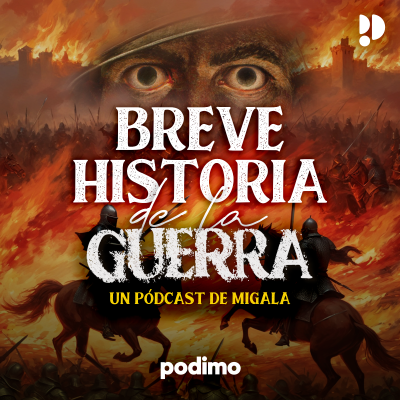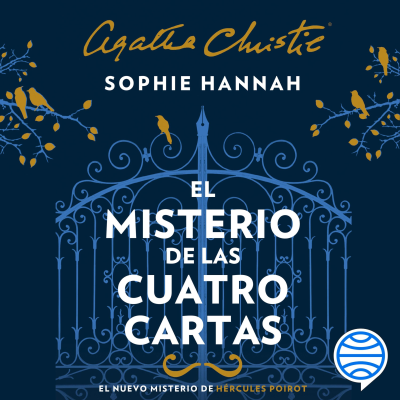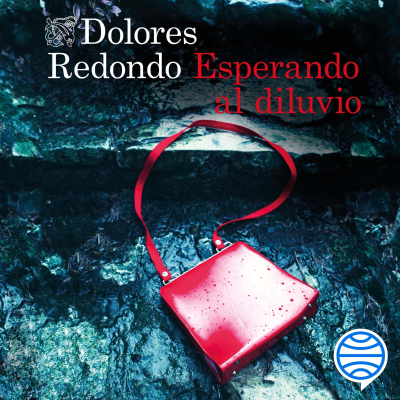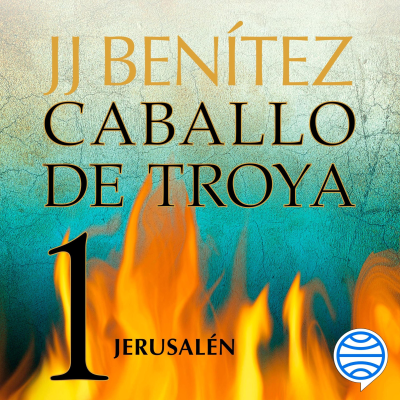
LASER: Materials Science Podcast
inglés
Tecnología y ciencia
Empieza 7 días de prueba
$99 / mes después de la prueba.Cancela cuando quieras.
- 20 hours of audiobooks / month
- Podcasts solo en Podimo
- Podcast gratuitos
Acerca de LASER: Materials Science Podcast
Discussing recent publications and news in materials science, physics, and engineering fields.
Todos los episodios
26 episodiosEpisode 21 – Underground with Dr. Sarah Truebe
shilouette photo of a caver sandblasting graffiti off of a cave wall [http://www.laserpodcast.com/wp-content/uploads/2020/07/Peppersauce-Cleanup_sq-300x300.jpg]Graffiti removal during the Peppersauce cave cleanup projectIn this episode Cameron interviews Dr. Sarah Truebe, the cave resource manager at Kartchner Caverns State Park in Arizona. This episode was recorded underground at the end of a day we spent cleaning graffiti out of this popular wild cave. We discuss how Dr. Truebe got started caving, how some cave research is performed, and some ethics of destructive testing methods in sensitive cave environments. > Show Notes: 3:00 Sarah talks about her experience on her first caving trip (right in the cave where we were sitting!) and a bit about cave safety 5:00 White nose syndrome [https://www.nps.gov/articles/what-is-white-nose-syndrome.htm] is discussed, a fungal disease killing bats across North America. 10:20 How Sarah got interested studying the monsoon at a young age, and how that turned into studying paleo climate in grad school. 20:20 What are the ethics of paleo climate studies in caves? How can we study delicate and irreplaceable features? 35:50 After a cave (like Kartchner) been studied for 50 years, what is left to do and monitor long-term? 40:00 CO2 variations in caves 45:20 How people can submit a proposal for a cave study that could potentially be approved in a cave like Kartchner. Links: * To learn more about or visit Kartchner Caverns, visit https://azstateparks.com/kartchner [https://azstateparks.com/kartchner] and follow them on Facebook [https://www.facebook.com/KartchnerCavernsSP] * To find a local caving club (grotto) or learn about the National Speleological Society, visit https://caves.org/ [https://caves.org/] * If you are totally new, maybe start with the “Guide to Responsible Caving” [https://caves.org/brochure/Guide_to_Resp_Caving.pdf] brochure As always, if you are doing interesting research you want to talk about, or have any interesting topic ideas, please get in touch and we may be able to do a show about it. Thanks to Ray Keeler for organizing the Peppersauce Cave Cleanup Project event that this interview was recorded during.
Episode 20 – Room Temperature Superconductivity Controversy
questionable data in χ, pointed out by Brian Skinner [ arXiv:1808.02929] [http://www.laserpodcast.com/wp-content/uploads/2018/08/RT-superconductor-noise-issue-skinner-300x287.png] [http://www.laserpodcast.com/wp-content/uploads/2018/08/RT-superconductor-noise-issue-skinner.png]questionable data in χ, pointed out by Brian Skinner [arXiv:1808.02929] We’re back! You may have heard about some controversy surrounding a recent pre-print published on the arxiv about room temperature superconductivity. This would be an extremely exciting result if it weren’t for some issues. The authors won’t share their samples and have not yet fully described how to make it–they say that will come in a future publication, and there is some question about the veracity of two plots in one of their very important figures. * The pre-print publication is available to read free here: https://arxiv.org/abs/1807.08572 [https://arxiv.org/abs/1807.08572] * The arxiv comment submitted questioning the data is here: https://arxiv.org/abs/1808.02929 [https://arxiv.org/abs/1808.02929] * And the twitter thread from the researcher who noticed the questionable data (@gravity_levity on twitter) is here: https://twitter.com/gravity_levity/status/1027717419400392705?s=19 [https://twitter.com/gravity_levity/status/1027717419400392705?s=19] * Ars technica recently published an article about this controversy: https://arstechnica.com/science/2018/08/room-temperature-superconductivity-claim-has-side-dish-of-dodgy-data/ for some background information and citations for things I talked about: * Here is a list of Tc and Hc2 for metallic superconductors: http://hyperphysics.phy-astr.gsu.edu/hbase/Tables/supcon.html#c [http://hyperphysics.phy-astr.gsu.edu/hbase/Tables/supcon.html#c1] * some commercial applications of superconductors (not completely up to date): http://www.ccas-web.org/superconductivity/wireless/ [http://www.ccas-web.org/superconductivity/wireless/] * an in-depth article from a tech website: https://thewire.in/the-sciences/did-iisc-team-find-a-room-temperature-superconductor-the-devils-in-the-details [https://thewire.in/the-sciences/did-iisc-team-find-a-room-temperature-superconductor-the-devils-in-the-details] While I was taking notes, I ended up writing them like a blog post instead of just my normal index card podcast notes, so here is an approximate transcript of the entire episode: > I wanted to share a recent paper that has been making some waves among the scientific community and on twitter about a claim of room temperature superconductivity. I’ll probably regret speaking out about this so early, so I’ll maybe treat this like a paper review and we’ll see how the data work out with peer review and reproducibility. A group from the respectable Indian Institute of Science, graduate student Dev Kumar Thapa and associate professor Anshu Pandey, have posted a pre-print paper on the arxiv called Evidence for Superconductivity at Ambient Temperature and Pressure in Nanostructures. Since this is the arxiv, this is an unfinished pre-print of a paper, not a peer-reviewed manuscript in final form, but it is a fast way to get it out and free to read. There will of course be links in the show notes. The most important part is they claim to have measured superconductivity at 236 K in silver nanoparticles embedded in a gold matrix. This claim is really remarkable when you look at other superconductors. A regular metal superconductor has a Tc less than 9.2 K, which is the highest Tc metal, Niobium. After this, the high temperature binary alloys go up a little bit toward 30 K, and the high temperature cuprates are all very complex structures like YBCO, BSSCO, and HBCCO are 92, 110, and 133 K respectively. Im going to start off ignoring the current controversy and saying that overall this paper is not bad, the claim is extraordinary but they characterized their material extensively, and documented all the things that I would have asked for. Assuming the data are correct and independently reproducible, this could be a very serious discovery. So before I get too deep into the paper here’s a really quick summary of superconductors for anyone who might not know what they are. A superconductor is a material that conducts electrons with no resistance, they are important for high tech devices and scientific research, and especially in wireless communications and extremely sensitive sensor applications. The primary goal here is to build these high tech devices that require the unique properties of superconductors, not to get zero-loss power lines (although there is a group trying that). The two types of superconductor are those that screen or block magnetic fields completely (these are Type I superconductors) and those that allow magnetic fields to pass through tiny pinholes of normal material called fluxons or flux vorticies (these are Type II). The easy way to guess which type a superconductor is is just to remember that for the most part, pure metal superconductors are all type I (as in they exclude magnetic fields completely until the field gets so strung it shuts off the superconductivity completely, this is called the Meisner effect), while compounds are mostly type II (as in they allow magnetic fields through little flux vorticies up to a point where the field destroys superconductivity completely). These magnetic fields are referred to as Hc1 and Hc2 (as in H, the magnetic field, c for critical, 1 where flux vorticies are formed and 2 for where superconductivity is destroyed completely). Okay, that should be enough background for what I’m going to say, so on to the publication. Like I said earlier, their remarkable claim is to have measured superconductivity at 236 K in nanostructures of silver nanoparticles (about 10 nm) embedded in a gold matrix. An easy thing to point out is that neither gold nor silver are superconducting on their own, and based on their chemical and structural analysis this is not an alloy, so these support the authors’ claim that the property has something to do with the nano structure. • Their structures at large (micron) scale don’t have good uniformity, but this is pretty typical for this type of work, and the actual nano particles have good uniform size distribution and shape (this of course coming from someone who doesn’t ever work with nanoparticles). After that is the part where I start having little issues with things. Now, a little context I spent over a year working with unvalidated claims of room temperature superconductivity in the past, and I’m also currently writing my dissertation, so I am in the mindset to look critically at everything as “this could be better if.” I’m saying this because want to point out that this part of the discussion isn’t ripping the authors work apart, just offering criticisims on a paper that isn’t peer reviewed or published yet. These are the same things the reviewers and editors will also pick up and fix before final publication. The 2nd figure shows the resistance vs temperature transition • R-T drop is good, clear and obvious resistance drop indicative of superconductivity, and this is the normal way you would check for it. The weird thing about this figure 2-a where they show the resistance vs temperature is that they are reporting the data in resistance instead of resistivity. Resistance is kind of a rough measurement because its so dependent on measurement geometry and sample size and thickness. This kind of result should be in resistivity so that it is universal. • From a quick calculation of resistivity, even at “normal” temperatures this gold is very conductive for such a thin film, especially one that is nanostructured. The normal resistivity is comparable to that of pure gold, and while its hard to increase the resistivity of gold by adding contaminants, these nanostructures don’t look like they are continuous and probably shouldn’t be so conductive. • Figure 2-B is fine data, but axes backwards hard to read (magnet field is independent variable should be on x) • Figure 3: other way to detect superconductivity is magnetic susceptibility o A few weird units in the paragraph, g/cc and “(si units)” for susceptibility is switching from CGS to SI, and also weird medical. o Susceptibility goes to -0.06, should be -1 for perfect diamagnet (superconductor) suggests only 6% of material is superconducting (they blame on imperfect sintering- could be, wouldn’t detract from discovery) o Same issue with independent variable on y-axis o Brian skinner post-doc @ MIT pointed out on twitter and published in arxiv o Unlikely to be a repeatable noise because its not the same in all the runs o The data changes halfway up so that the transitions are different o Looks like one or two of these curves could be faked or manipulated. • Figure 4: a is interesting, shows decreasing gold fraction increases Tc (why did they pick a the 236 K sample to focus their paper on) o Doesn’t include their highest temperature specimen, even an arrow or blank space. o Figures b and c are pretty useless, and not sure what they are showing or why. Even after reading, these seem unnecessary and not helpful. B is just noise but not labeled in the figure or anything and C is not noise even though it should be. • In the supplemental, my first issue is with S3, this is a blurry screenshot of a EDS spectra form an analysis software, not an publication quality original graphic with most of the peaks labeled but not all of them. It would have been wise to label the giant copper peak from the grid so that people who see it and don’t recognize it immediately know what that element is. • Then figure S8 is just “transitions in resistivity as observed in three different NS samples” no descriptions or indication why we want to see three random samples after already seeing a bunch of this measurement. Also the resistance and pattern is significantly different than the figure directly above it, S7. Just looks sketchy.
Episode 19 – 2015 Perihelion Edition
perihelion diagram from wikipedia [http://www.laserpodcast.com/wp-content/uploads/2014/01/Apogee_PSF-300x189.png] [http://www.laserpodcast.com/wp-content/uploads/2014/01/Apogee_PSF.png]1) aphelion 2) perihelion 3) sun (Not to scale) source: WIkipedia on Apsis [https://en.wikipedia.org/wiki/File:Apogee_%28PSF%29.png] Welcome to 2015! This year’s perihelion edition was recorded on the day which the earth is closest to the sun. We cover a diverse list of important scientific and engineering happenings from 2014, and even talk about a little biology and genomics research! (but don’t worry, its mostly cool physics, space, and engineering stuff.) 4:00 Many of these stories came from this big summary graphic [http://www.futurism.co/this-year-in-science-infographic/] that was posted on /r/futurology. Don’t worry, we looked up real sources for everything! 7:30 the big bang BICEP 2 discovery [http://www.nature.com/news/how-astronomers-saw-gravitational-waves-from-the-big-bang-1.14885] (and controversy and final dismissal [http://www.nature.com/news/gravitational-waves-discovery-now-officially-dead-1.16830]) 11:09 There was also controversy with a fraudulent report [http://www.nature.com/nature/journal/v511/n7507/full/nature13598.html] of a way to make induced pluripotent stem cells (IPC) by dipping them in a light acid. 14:08 artificial white blood cells [https://cornell.app.box.com/Protein] (used as an injectable “cancer vaccine” [http://mediarelations.cornell.edu/2014/01/06/piggy-backing-proteins-ride-white-blood-cells-to-wipe-out-metastasizing-cancer/]) 15:00 Gene therapy used in eyes to help treat macular degeneration [http://www.bbc.com/news/health-25718064] 18:00 There were a pair of genetically engineered [http://rt.com/news/monkeys-customized-mutation-study-435/] monkeys born this year! and we have a bunch of discussion about ethics 25:30 we finally move on from Biology back to physics! 26:40 removing hydrocarbons [http://www.nrl.navy.mil/media/news-releases/2014/scale-model-wwii-craft-takes-flight-with-fuel-from-the-sea-concept] from seawater. (like we talked about in Episode 16 [http://www.laserpodcast.com/2014/05/episode-16-sun-surf/]) 29:00 “Visual microphone” [http://people.csail.mit.edu/mrub/VisualMic/] reconstructing audio from tiny vibrations in videos. Great for spys and burn notice! 33:50 space and disasters (Virgin Galactic’s SpaceShipTwo [http://www.popularmechanics.com/science/space/news/spaceshiptwo-virgin-galactic-disaster-everything-you-need-to-know-17375882] & Orbital Sciences Antares Rocket [http://www.astrowatch.net/2014/11/antares-rocket-disaster-aftermath.html]) 36:00 space is hard. but really important for the future of humanity and science! 41:00 The Curiosity rover might have detected methane on Mars [http://news.discovery.com/space/wait-theres-more-curiosity-confirms-organics-on-mars-141216.htm]! 44:00 computers and data security were kind of bad this year. We discussed this in detail on our Heartbleed show [http://www.laserpodcast.com/2014/04/laser-pulse-3-the-heartbleed/] (our most popular episode ever!) but things have continued and are very bad both in terms of security, and internet freedom. 47:30 Cosmos was pretty cool, except chase doesn’t like NGT because chase hates everything other people love.
Episode 18 – Space Space Space
espresso machine and 3-d printer [http://www.laserpodcast.com/wp-content/uploads/2014/10/3d-printer-espresso-300x149.jpg] [http://www.laserpodcast.com/wp-content/uploads/2014/10/3d-printer-espresso.jpg]Can’t really tell which is the 3-d printer and which is the espresso machine… Images from Lavazza [http://www.lavazza.com/en/media-center/pressreleasedetail/58dae66d-f246-11e3-b615-c90c8a507add/] and Made In Space [http://www.madeinspace.us/] We’re finally back from our long hiatus! Sorry about the wait, both Cameron and Emily were busy getting their masters degrees, and right after he submitted his thesis, Cameron’s laptop got fried! This week we discuss Space X and Boeing contracts to transport NASA astronauts to the International Space Station by 2018, and some new luxuries that will soon be available on the ISS; a 3-D printer, and an espresso machine! 2:00 First story today is about the recent announcement that NASA will have contracts with SpaceX and Boeing to deliver astronauts to the international space station by 2018! http://www.space.com/27169-nasa-picks-spacex-boeing-spaceships.html [http://www.space.com/27169-nasa-picks-spacex-boeing-spaceships.html] 15:00 we wonder about the nomenclature for spaceships/vehicles/shuttles/capsules 24:00 we start our discussion on coffee with a unrelated mention that Starbucks is working on a coffee drink that is supposed to taste like beer [http://www.usatoday.com/story/money/business/2014/09/22/starbucks-coffee-beer-brewing-fast-food-restaurants/16061649/]? 26:00 the ISS-Presso is an espresso machine planned to go to the space station at the end of 2014. https://twitter.com/AstroSamantha/status/478219649721839616/photo/1 [https://twitter.com/AstroSamantha/status/478219649721839616/photo/1] http://www.wired.co.uk/news/archive/2014-06/14/isspresso [http://www.wired.co.uk/news/archive/2014-06/14/isspresso] 40:00 on to 3-D printing in space!!! The company “Made In Space” is working with NASA to send one of their fillament-extrusion 3-D printers onto the ISS for an experiment to show that the additive manufacturing technique works in space without modification. http://www.madeinspace.us/ [http://www.madeinspace.us/] http://www.nasa.gov/mission_pages/station/research/experiments/1115.html [http://www.nasa.gov/mission_pages/station/research/experiments/1115.html] 44:00 technology readiness levels, whatever those are. Links to the music used in this week’s episode: Intro: Intro [http://wearecrying.bandcamp.com/album/return-to-olde-world] – Crying [http://wearecrying.bandcamp.com/album/get-olde] (Return to Olde World [http://quoteunquoterecords.com/qur070.htm]) Outro: Dreams are Maps – The Wild [http://thewildatl.com/] (Dreams are Maps [http://quoteunquoterecords.com/qur067.htm])
PULSE! #4 – Better Coffee Through Chemistry
coffee with caffeine [http://www.laserpodcast.com/wp-content/uploads/2014/06/800px-A_small_cup_of_coffee-300x225.jpg] [http://www.laserpodcast.com/wp-content/uploads/2014/06/800px-A_small_cup_of_coffee.jpg]Image from Wikipedia [https://en.wikipedia.org/wiki/Coffee#mediaviewer/File:A_small_cup_of_coffee.JPG] with slight modifications Most coffee-particular people already know that the quality of the water you use is important for good coffee, but a recent paper describes how affecting the specific hard mineral content can have important changes in the relative extraction of specific flavor and strength affecting chemicals in your brew. We discuss the basics of coffee preparation, and the conclusions of the paper. 1:15 Greg throws out a Leeroy Jenkins reference right off the bat. (I guess wait for episode 32.33?) 2:00 the article that prompted this show was “A Chemist Has Uncovered A Secret To Brewing Delicious Coffee At Home [http://www.businessinsider.com/a-chemist-has-uncovered-a-secret-to-delicious-coffee-2014-6]” published in Business Insider on Jun 5th, 2014. 2:45 The paper is called “The Role of Dissolved Cations in Coffee Extraction” [http://pubs.acs.org/doi/abs/10.1021/jf501687c], by Christopher H. Hendon, Lesley Colonna-Dashwood, and Maxwell Colonna-Dashwood, published in the Journal of Agricultural and Food Chemistry. 3:50 The researcher identified seven chemicals important to the flavor and strength of coffee, and used density functional theory to calculate the bonding energy between these chemicals and common ions in water that contribute to water hardness. 6:45 one of the chemicals present in Coffee, eugenol [http://www.academicwino.com/2013/05/water-temperature-volatiles-oak-barrels.html/], is also present in whisky and other barrel-aged liquors. 16:00 It might be useful to suggest to coffee brewers to use distilled or reverse osmosis water and then add something similar to these brewing salts to the water to facilitate extraction! 18:10 The paper only talks about water with Total Dissolved Solids (TDS) of <300 ppm, which is standard for municipal water supplies, but well or ground water in areas (like our own Phoenix area) can have much more calcium hardness than that. Links to the music used in this week’s episode: Intro: Intro [http://wearecrying.bandcamp.com/album/return-to-olde-world] – Crying [http://wearecrying.bandcamp.com/album/get-olde] (Return to Olde World [http://quoteunquoterecords.com/qur070.htm]) Outro: Dreams are Maps – The Wild [http://thewildatl.com/] (Dreams are Maps [http://quoteunquoterecords.com/qur067.htm])
Elige tu suscripción
Premium
20 horas de audiolibros
Podcasts solo en Podimo
Podcast gratuitos
Cancela cuando quieras
Empieza 7 días de prueba
Después $99 / mes
Empieza 7 días de prueba. $99 / mes después de la prueba. Cancela cuando quieras.























